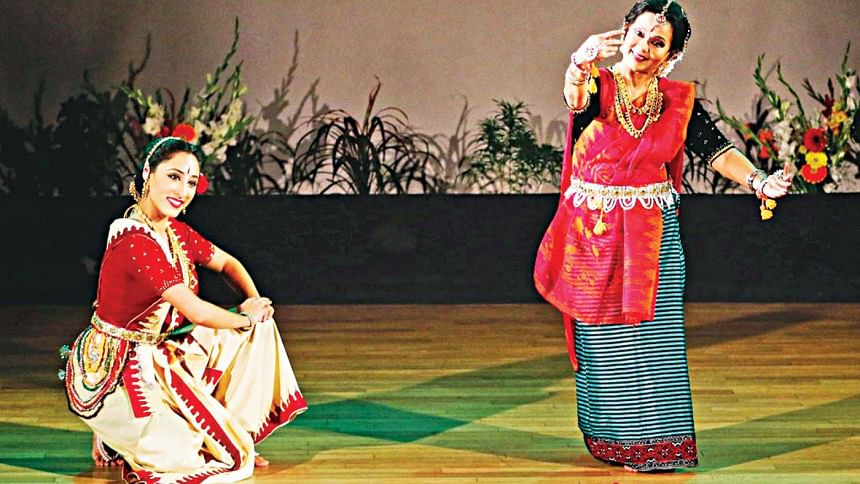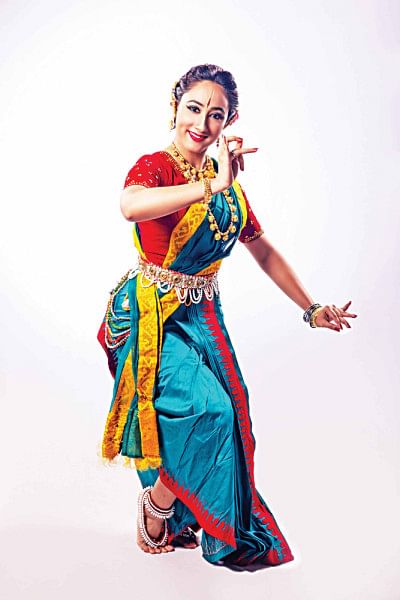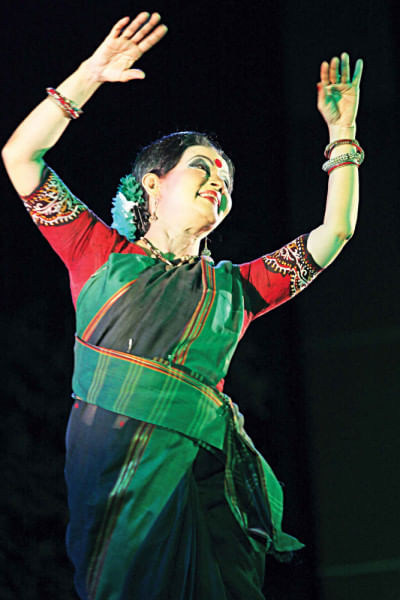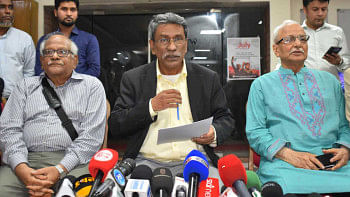GRACEFUL DANCERS

Rafi Hossain: Today, we have the mother-daughter duo Sharmila Banerjee and Sudeshna Swayamprabha. We have been in a place where we do not know what the future holds for any forms of art. What do you both think the future holds for dance?

Sharmila: Even though we were locked in our houses due to lockdown, productivity did not remain stagnant. At the beginning of lockdown, I started taking classes online. I was feeling a lot of mental anguish in lockdown, so for me, teaching dance classes online was a good way of doing that. Most people attending these classes were also happy with doing the classes online, as it may have also helped them get distracted from the ongoing pandemic. Most of the institutions around the world have also been doing online classes during the pandemic. There were even festivals held online where students were able to send recordings of their dancing. During this pandemic, every artist out there has been working on themselves and their craft.
Rafi: Sharmila Di, what would you say is the dance form which represents Bangladesh the most?
Sharmila: Sattriya dance is the dance which represents the Indian Subcontinent a lot, and since we are part of the subcontinent, we can call it ours. Manipuri dance is also something we can call Bangladeshi, as Manipuri people have been living in Bangladesh. Rabindranath has also given Bengalis a dance form through his songs. His songs take elements from different song types, so to dance to his songs will also require dancers to take elements from different dance forms. Only Bangla speakers will be able to fully comprehend the beauty of his words and songs. So that is also something that is ours.
Rafi: It seems to me that for some reason, contemporary dance forms are not flourishing in Bangladesh. Is it true?
Sudeshna:I would not concur with what you said, as there are many instances of people in Bangladesh doing great works in contemporary dance. Another thing is that many people misunderstand what contemporary dance means. Some think that it is a collection of Western dances which are connected. However, while that may have been the case in some dance pieces, it is not accurate with most. In reality, contemporary is mainly an idea that portrays how to make your art relevant to your current time, environment and people. While traditional dance forms have a set of rules which should be strictly maintained, contemporary dance presents a way to think more out of the box. A lot of great contemporary dance programmes have been done in recent years in Bangladesh. For a form of dance to flourish somewhere, it requires a long time. So, that's why we cannot say that contemporary dance is flourishing in Bangladesh, as it has not been here for long enough. However, I think that a time will come when contemporary dance is widespread in Bangladesh.
Sharmila: I would like to add something to what she said: dance needs to be studied a lot. To properly learn a dance, you need to study its grammar, watch it properly, understand the meaning behind it, and ultimately internalize that dance. So it will take time to do that with contemporary dance in Bangladesh. But, there will be a time when it is widespread.
Rafi: Is the younger generation losing interest in tradition and culture?
Sharmila: They are not losing interest in tradition and culture. The younger generation will always want to learn more from other places, but the root will always be there. People have a misconception that if we bring in dances that have Western influences, we will lose our traditional dances. We have been taking influences from Western dance for a long time, and they have been also inspired by ours. I think that if people studied the history of dance more, then they would see how the idea that they have is very incorrect. The younger generation is getting access to Western dance very easily due to the internet, and instead of learning the basics of the dance, they are simply learning it by looking at dances. That poses a problem, but the majority of the ones who train end up learning it adequately.

Sudeshna: I want to add that the only thing constant in everyone's lives is change. The change will come, and it is better to accept it. The Bharatanatyam done now is not the same as the one done eighty to hundred years ago. Even the grammar of the dance form has changed and evolved with time. Research is being done on the form constantly because evolution is what makes it stay relevant with time. It will be different in the future, but the essence will always remain the same.
Rafi: Thank you, I had a great time talking to both of you.
Sharmila: Thank you for having us, Rafi. It was good talking to you because you let us talk properly. We could be honest and open with you. It felt easy for us to talk and I could see how you were listening intently. I am looking forward to talking to you again, Rafi.
Sudeshna: I am very happy to have been able to come here and talk to you. I was able to tell you a lot of things which I thought are relevant and it felt comfortable to open up to you.

 For all latest news, follow The Daily Star's Google News channel.
For all latest news, follow The Daily Star's Google News channel. 



Comments